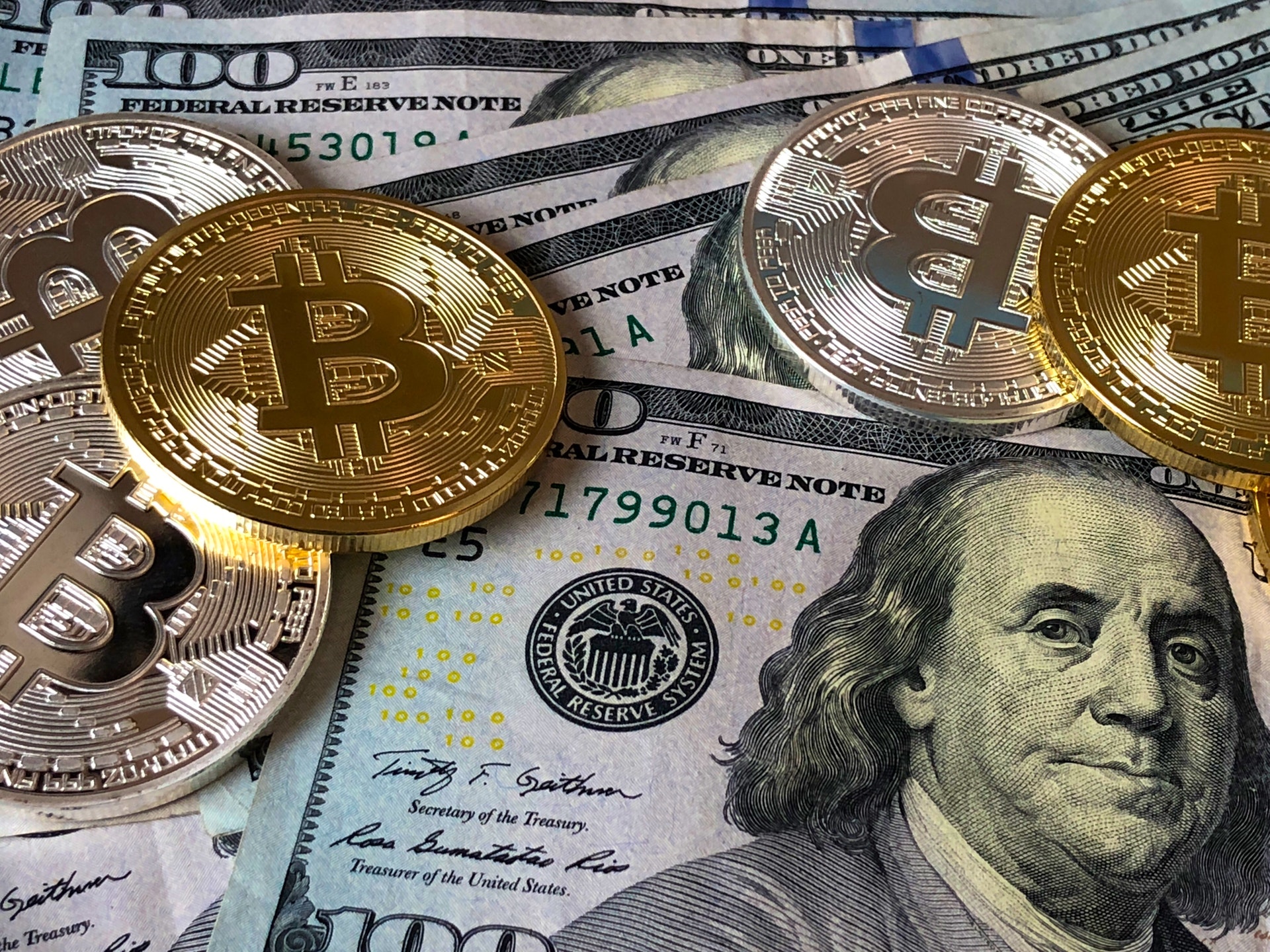Unless you’re living under a rock, cast away from modern civilization or lost at sea, you have probably heard of Bitcoin. Having generated an onslaught of media hubbub and social media frenzy, you cannot not have heard about it. What Bitcoin is, or might become, is what could elude you perhaps. And so, thank the Heavens for this post, because that is exactly why it has come to be: To help separate the wheat from the chaff and make it crystal about what exactly Bitcoin is. Not the entirety of it, but I’m confident that you’ll walk out of here better than you found me.
Reader Beware: This post is not investment advice any more than the Wall Street Journal is a lingerie catalogue.
Magic Internet Money!
Cryptocurrencies have been a source of much talk online. Having their roots as “nerd money”, they now dominate discussions including, and proudly not limited to, investors, venture capitalists, prime time news, thought-leader podcasts, market analysts et cetera, both online and in over 150 countries. The design and philosophy behind cryptocurrencies and why they are impactful is a topic that at best, eludes most, at worst, is misunderstood by others. And yes, not even experts are exempt from this.
Bitcoin, released in 2008, was the first ever cryptocurrency. If you’re among the people whom cryptocurrency is a tough turban to wrap your head around, it helps to think of them as digital systems of payment/money that are not dependent on nation-backed currencies, like the shilling, to facilitate transactions between parties. Born of the Internet, they are their own forms of money, complete with value ascribed to them, maintained by the owners of the “coins”, backed by mathematics and cryptography, all the while not tied to a specific economy.
That’s a mouthful! But it’s also my idea of a neatly packed statement that offers compressed insight into what Bitcoin, and the larger cryptocurrency design philosophy, entails. But to get the whole idea of it, we need to do more than just scratch the surface.
We will look at it one step at a time, in three parts: The Coin, The Ledger, The Wallet. So, come along and let’s unpack the nuance.
I. THE COIN
While it may seem obvious to you as to what a currency is, most of us rarely give a hard thought to what the nature of money really is.
In the simplest of terms, currency is the object/medium of exchange within a transaction. With the current economy, what we call money is the default medium of exchange in transactions, at least in mainstream economics. But it was not always money that acted as currency for periods in history. I’m quite certain you’re aware of ancient civilizations that used objects held to be of value as currency with gold and silver being the most prominent. As times changed and communities expanded, it became apparent that more innovative forms of currency needed to arise. And so man made money.
So, you walk into a store to get some milk and as currency, you decide to offer the vendor a watch. That bears a problem. The vendor may like the watch, sure, but they may not need a watch right away. But the vendor still needs the milk to fly off the shelf.
Enter money. Ka-Ching!
Money acts as a currency (a medium of exchange) that both you and your milk vendor can unanimously agree on to facilitate trade. Hmm, okay, simple enough. But what is money, anyway?
What you’ve grown up knowing as money is fairly obvious: coins and paper that we have ascribed some value to that will help us facilitate trade and store our wealth in, for our case it’s the shilling. In more technical parlance, we call this Fiat money. Fiat Money is the kind of money that is issued by a government, maintained by a central bank and backed by the country’s economy. Fiat currency refers to the Fiat money that is currently in circulation.
So, it happened that, on the October of ’09, a group of relatively unknown programmers under the pseudonym, Satoshi Nakamoto, released a document detailing a new kind of payment system that didn’t go through a middleman and didn’t need maintenance by a central party. It was as we know it, the birth of Bitcoin.
As a currency, Bitcoin is more specifically a relatively new form of currency innovation called cryptocurrencies. As we have noted earlier, Born of the Internet, cryptocurrencies are their own forms of money, complete with value ascribed to them, maintained by the owners of the “coins”, backed by mathematics and cryptography, all the while not tied to a specific economy. The hype behind cryptocurrencies lay in the fact that your ‘coins’ are protected behind some hard math that only you can access and that no central bank or government is controlling the circulation of the coins, thus giving you financial privacy and total autonomy over your money. With Bitcoin, there came a whole new way at challenging what we had long thought of as money.
If you can examine Fiat money, I’m convinced you can think of the many reasons why the system worked.
For starters, Fiat money is easily transportable and this is probably why gold fell out of favour as currency. Fiat money is reliably divisible; you can carry a one–thousand-shilling note or two five-hundred-shilling notes or five two-hundred-shilling notes and you still wouldn’t suffer a loss in the value of your money. Fungibility is another feature that may elude you but it is that Fiat money is interchangeable. Like gold, a pound of gold and a second pound of gold can both be considered of equal value, given equal purity.
You will find that for these same reasons (and many more) that made Fiat money a favourable currency within mainstream economies, Bitcoin too (and the larger cryptocurrency technology) follows similar modeling albeit applied differently. For one there can only ever be 21 million Bitcoins in existence which makes it a truly scarce asset. It is important for money to be scarce to mitigate against destructive inflation policies that would damage an economy. Currently, the number of Bitcoins in circulation total up-to 18 million BTC. For the same reason as Fiat money, Bitcoin is also highly divisible. If you can think of 100 cents as making up 1 shilling (Ksh), then a hundred million satoshis make up 1 BTC. Fungibility comes in the sense that you’re sure 500 shillings in Nairobi is equal in value to 500 shillings in any other place in Kenya thus making for convenient transaction across cultures. And it is the same with Bitcoin. It doesn’t matter whether you have this BTC or that BTC. The value is equal.
But the one place that Bitcoin really outshines Fiat money is that BTC is resistant to being counterfeited. Remember the hard math (cryptography) that guarantees the security of your coins? It also guarantees that BTC is seemingly impossible to being counterfeited, enforcing it as a truly scarce asset. This being backed by cryptography is what earns them the name crypto-currencies, i.e., a currency backed by a cryptographic scheme.
Mining: How new Bitcoins are made
When you join the Bitcoin network, you’re given a digital wallet that will act as your store of resources, or, like your little “bank”. For purposes of clarity, we will use Bitcoin to refer to the system/network and BTC to refer to the coins/tokens earned and spent across the network. This bears repeating: There can only ever be 21 million Bitcoins (BTC) in existence with currently around 18 Million BTC in circulation. But when Bitcoin began, there were only 50 BTC up on offer. The rest? They were non-existent. So where did they come from?
Mining.
Now that you have your digital wallet, you may want to send or receive some BTC from another participant on the network. When someone wants to send some BTC to another participant on the network, they first put the word out through a broadcast message. Then you receive it, add it to a list of other transactions you wish to approve and then approve them. At this moment of approval, your computer solves a hard problem that takes approximately 10 minutes. Once the puzzle is successfully solved, the transactions are approved and guess what? Some BTC magically appear in your wallet, out of nowhere. This is what the network participants call mining and thus how new BTC is created.
And for as long as you’re willing to solve the hard puzzles involved in approving other people’s transactions on the network, BTC will always magically appear in your wallet. This creates a truly decentralized process of legitimately “printing money” where all authority is not vested on a singular central entity. Unlike Fiat Money, Bitcoin is a truly democratic monetary system.
II. THE LEDGER
Recall back to when you were a little one, probably eight years of age, clueless school-goer, in a class of, say 30, that had one class-teacher managing the lot of you.
She had a class register and the rule was simple:
At the mention of your name, you have to publicly confirm that you had attended class for the day. All 30 of you. If you haven’t attended class for the day, well, as far as the register is concerned, that took care of itself
But imagine a rare case where instead one class register owned and maintained by the class-teacher, we have 31 class registers owned and maintained by every pupil in the class. Yes, all 30 of you. Now the rule here is quite simple:
The class teacher, upon mentioning a pupil’s name, everybody in class, at the same moment marks either that the pupil in question is present or absent so, that now we don’t have a master copy
So now we have 31 registers, each reflecting the same information, all stamped and stored in every pupil’s teepee spring file. It gets better.
Imagine one pupil has bad intentions towards you and wishes to silently mark you as absent when in fact, you are present. Well, guess what? There are 30 other registers saying the opposite. Or is it five pupils conspiring against you? Guess what? There are 26 other registers saying the opposite. It’s the teacher, isn’t it? So, she has managed to secretly convince 10 pupils to conspire against you, hasn’t she? Well, guess what? There are 20 other registers saying the opposite. The thing is this, whichever way you may twist this marvel of a system, there’s almost no possible way to covertly undermine the integrity of the system. It is open, transparent, secure and decentralized.
Blockchain Technology: Bitcoin’s Register
A Ledger is any official document whose contents are considered to be final and bearing authority.
Having their use cases within the banking industry and enterprise, ledgers are surprisingly common among other sectors. A title deed is a ledger; it authoritatively confirms ownership of a piece of land. An identity card is a ledger; the contents on it are official and considered to be final; same thing with a class register and a school report card. Their contents are considered to be final and authoritative.
Ledgers are crucial in accounting as they provide accountability. They store records of events and contents associated with those events. For the case of the Bitcoin network, what we call the Blockchain is, in fact, the ledger. Since no one person or group controls the system, no one person or group maintains the Blockchain. Yet it is the final say on who owns what Bitcoin or who sent what Bitcoin to who and how many. Approximately, 200 Bitcoins are mined daily, and they’re mined by the participants on the network who approve the transactions for other participants and as a reward, a set amount of BTC is minted from within their wallets. Currently, the mining reward on the Bitcoin network is 6.25 BTC. Like our public class register system, every participant on the network has a copy of all the transactions happening on the network, a record of who owns what Bitcoins and who sent how many Bitcoins to whom so, that there’s no master copy. And collectively, they all reflect the same information.
A few people wanting to corrupt the system and illegally make away with some BTC? It’s immaterial. There will always be more than enough copies of the Blockchain reflecting the real data. And every ten minutes that the attacker is not successful, (approximately, the amount of time it takes to approve a fresh list of transactions, thereby adding a new record to the system), it gets harder. It is this ledger design that makes Bitcoin virtually “un-hackable”. And like our novel class register system, if half of the pupils in class plus the teacher conspire against you then guess what? It really doesn’t matter. A good number of people are not willing to help maintain a system whose integrity has been severely undermined. Ultimately, everyone comes to the realization that operating honestly within the system is much more rewarding than attempting to work against it.
III. THE WALLET
Everyone knows how email works. It doesn’t matter how far removed from technology you are, you have probably used email far many times than you can count. We’ll use the idea of email to understand the Bitcoin wallet. It goes something like this: we connect, I give you my email address, you get home, send me an email and now I have your email address. The design of email is that none of us will need each other’s passwords to deposit mail in another’s inbox. But each of us will need our passwords to check our mail. In much the same way, a Bitcoin wallet comes with a pre-calculated pair of keys – a Public Key, which acts as an address, and a Private Key, that takes the role of a password. Your Public Key and Private Key are inextricably linked using a secure mathematical model. This is the math that powers the cryptographic scheme that secures your Bitcoins behind strong encryption.
What you probably need to know is that your wallet is self-hosted. The upside to this is that you are guaranteed privacy in your financial MO. The downside is that since your resources are self-hosted, your keys are entirely your responsibility. Unlike email, where your password and address are hosted in a central server that aids during password recovery procedures, with a crypto-wallet, once you lose your keys, you lose your crypto assets. There will probably be innovations to mitigate against this in the future but for the moment, this is the rule. In this way, your wallet acts as your safe behind which your Bitcoins are stored and secured by your key pairs (Public Key and Private Key) as a sort of lock and key system. This differentiates it from traditional banking where a trusted agent handles your financials.
Coin-clusion?
For cryptocurrencies, what the future holds is immense. For one, we cannot underestimate the impact that an alternative monetary system might possibly bring forth; with an alternative financial system, any other institution can be paralleled. Bitcoin, and cryptocurrencies at large, are considered programmable money, i.e., incentives can always be agreed upon by a community and updated in code to reflect this consensus, potentially changing the economic behavior of the network participants.
Second, many early mock-ups of virtual currencies, like video game coins and collectibles, online tokens, gift cards etc. now have a solid base upon which to build off novel products for upcoming markets. Think trophies earned from a Clash of Clans raid or inventory from a popular hack-n-slash game can now be ascribed real world value and tokenized on-chain. And that’s not all. It will be now possible to monetize your Instagram likes in exchange for some crypto that is not your local currency but is still real money.
The possibilities are humongous. In a world that’s increasingly migrating to the cloud, a natively digital economy is its natural conclusion. Bitcoin was the rallying call and now the genie is out of the bottle. What wishes will be granted is what remains to be seen.
But if you were to take one thing from this post, it’s this: Born of the Internet, cryptocurrencies are their own forms of money, complete with value ascribed to them, maintained by the owners of the “coins”, backed by mathematics and cryptography, all the while not tied to a specific economy.
Be that as it may, Happy Holidays!



